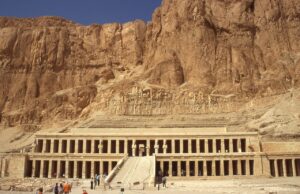Unveiling the Enigma: Exploring the Lost City of Petra, Jordan
Nestled amidst the rugged desert landscape of southern Jordan lies one of the world’s most enchanting archaeological sites – the lost city of Petra. Carved into sheer rose-red cliffs, this ancient Nabatean city is a testament to human ingenuity and craftsmanship. With its captivating beauty and rich historical significance, Petra has rightfully earned its place as one of the New Seven Wonders of the World. Join us as we embark on a journey to unravel the mysteries of this timeless marvel.
A Glimpse into History
Founded as early as 312 BC, Petra served as the capital of the Nabatean Kingdom, a thriving trade hub connecting Arabia, Egypt, and Syria. Its strategic location along the ancient spice routes brought wealth and prosperity to the Nabateans, who sculpted magnificent structures directly into the rose-colored sandstone cliffs. Over the centuries, Petra flourished as a center of culture, religion, and commerce, until its decline in the 7th century AD.
The Iconic Treasury
No visit to Petra is complete without beholding the iconic Treasury, also known as Al-Khazneh. Carved with intricate detail into the face of a towering cliff, this majestic façade once served as a mausoleum for Nabatean kings. Admire the intricate blend of Hellenistic and Eastern architectural styles, and marvel at the craftsmanship that has stood the test of time. As the sun dips below the horizon, witness the Treasury aglow with the warm hues of sunset, a sight that will leave you awe-struck.
Beyond the Treasury: Hidden Gems of Petra
While the Treasury may steal the spotlight, Petra boasts a plethora of lesser-known wonders waiting to be discovered. Wander through the winding Siq, a narrow gorge flanked by towering cliffs, and feel the anticipation build as you catch your first glimpse of the Treasury at its end. Explore the Street of Facades, lined with intricately carved tombs and temples, each bearing witness to Petra’s vibrant past. Don’t miss the Monastery, a colossal structure perched atop a hilltop, offering breathtaking views of the surrounding landscape.
Unraveling the Mysteries
Despite decades of excavation and research, Petra still holds many secrets waiting to be unearthed. Archaeologists continue to uncover new chambers, tombs, and artifacts, shedding light on the daily lives of the Nabateans. From ancient irrigation systems to intricate rock-cut architecture, each discovery adds to the allure of Petra, inviting visitors to delve deeper into its enigmatic past.
Preserving Petra for Future Generations
While Petra’s enduring beauty captivates millions of visitors each year, it also faces numerous challenges, including erosion, vandalism, and over-tourism. Efforts are underway to preserve and protect this UNESCO World Heritage Site for future generations. Sustainable tourism practices, conservation initiatives, and community engagement are essential in safeguarding Petra’s cultural and natural heritage for years to come.
Practical Tips for Visiting Petra
Plan your visit during the cooler months (October to April) to avoid the scorching desert heat.
Wear comfortable walking shoes, as exploring Petra involves traversing uneven terrain.
Stay hydrated and carry sunscreen, as the desert sun can be intense.
Hire a local guide to gain deeper insights into Petra’s history and significance.
Respect the site and refrain from littering or defacing the ancient monuments.
Conclusion
The lost city of Petra stands as a testament to human resilience, creativity, and ingenuity. Its awe-inspiring architecture, rich history, and timeless beauty continue to captivate travelers from around the globe. As you wander through its ancient streets and marvel at its towering facades, you’ll find yourself transported back in time to a world of wonder and intrigue. Petra is more than just a destination – it’s a journey through the annals of history, waiting to be explored and cherished for generations to come.






